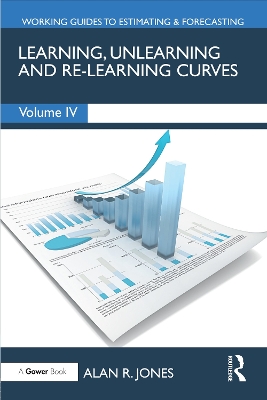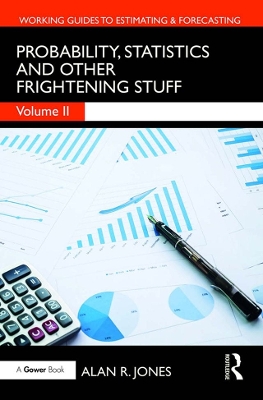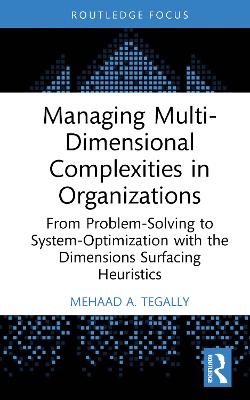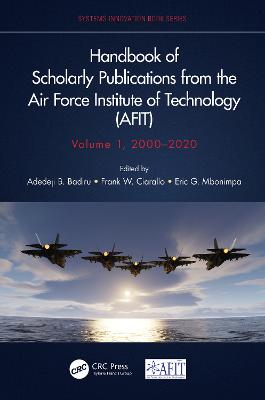Best Fit Lines & Curves
 portes grátis
portes grátis
Best Fit Lines & Curves
And Some Mathe-Magical Transformations
Jones, Alan
Taylor & Francis Ltd
04/2025
530
Mole
9781032948515
Pré-lançamento - envio 15 a 20 dias após a sua edição
Descrição não disponível.
Foreword, 1 Introduction and Objectives, 1.1 Why write this book? Who might find it useful? Why Five Volumes? 1.1.1 Why write this series? Who might find it useful? 1.1.2 Why Five Volumes? 1.2 Features you'll find in this book and others in this series, 1.2.1 Chapter Context, 1.2.2 The Lighter Side (humour), 1.2.3 Quotations, 1.2.4 Definitions, 1.2.5 Discussions and Explanations with a Mathematical Slant for Formula-philes, 1.2.6 Discussions and Explanations without a Mathematical Slant for Formula-phobes, 1.2.7 Caveat Augur, 1.2.8 Worked Examples, 1.2.9 Useful Microsoft Excel Functions and Facilities, 1.2.10 References to Authoritative Sources, 1.2.11 Chapter Reviews, 1.3 Overview of Chapters in this Volume, 1.4 Elsewhere in the 'Working Guide to Estimating & Forecasting' Series, 1.4.1 Volume I: Principles, Process and Practice of Professional Number Juggling, 1.4.2 Volume II: Probability, Statistics and other Frightening Stuff, 1.4.3 Volume III: Best Fit Lines & Curves, and some Mathe-Magical Transformations, 1.4.4 Volume IV: Learning, Unlearning and Re-Learning Curves, 1.4.5 Volume V: Risk, Opportunity, Uncertainty and Other Random Models, 1.5 Final Thoughts and Musings on this Volume and Series, References, , 2 Linear and Nonlinear Properties (!) of Straight Lines, 2.1 Basic Linear Properties, 2.1.1 Inter-relation between Slope and Intercept, 2.1.2 The Difference between Two Straight Lines is a Straight Line, 2.2 The Cumulative Value (Nonlinear) Property of a Linear Sequence, 2.2.1 The Cumulative Value of a Discrete Linear Function, 2.2.2 The Cumulative Value of a Continuous Linear Function, 2.2.3 Exploiting the Quadratic Cumulative Value of a Straight Line, 2.3 Chapter Review, References, , 3 Trendsetting with Some Simple Moving Measures, 3.1 Going All Trendy: The Could and The Should, 3.1.1 When should we consider trend smoothing?, 3.1.2 When is trend smoothing not appropriate?, 3.2 Moving Averages, 3.2.1 Use of Moving Averages, 3.2.2 When not to use Moving Averages, 3.2.3 Simple Moving Average, 3.2.4 Weighted Moving Average, 3.2.5 Choice of Moving Average Interval: Is there a better way than guessing? 3.2.6 Can we take the Moving Average of a Moving Average?, 3.2.7 A Creative Use for Moving Averages - A Case of Forward Thinking, 3.2.8 Dealing with Missing Data, 3.2.9 Uncertainty Range around the Moving Average, 3.3 Moving Medians, 3.3.1 Choosing the Moving Median Interval, 3.3.2 Dealing with Missing Data, 3.3.3 Uncertainty Range around the Moving Median, 3.4 Other Moving Measures of Central Tendency, 3.4.1 Moving Geometric Mean, 3.4.2 Moving Harmonic Mean, 3.4.3 Moving Mode, 3.5 Exponential Smoothing, 3.5.1 An Unfortunate Dichotomy, 3.5.2 Choice of Smoothing Constant, or Choice of Damping Factor, 3.5.3 Uses for Exponential Smoothing, 3.5.4 Double and Triple Exponential Smoothing, 3.6 Cumulative Average and Cumulative Smoothing, 3.6.1 Use of Cumulative Averages, 3.6.2 Dealing with Missing Data, 3.6.3 Cumulative Averages with Batch Data, 3.6.4 Being slightly more Creative - Cumulative Average on a Sliding Scale, 3.6.5 Cumulative Smoothing, 3.7 Chapter Review, References, , 4 Simple and Multiple Linear Regression, 4.1 What is Regression Analysis?, 4.1.1 Least Squares Best Fit, 4.1.2 Two Key Sum-to-Zero Properties of Least Squares, 4.2 Simple Linear Regression, 4.2.1 Simple Linear Regression using Basic Excel Functions, 4.2.2 Simple Linear Regression using the Data Analysis Add-in Tool Kit in Excel, 4.2.3 Simple Linear Regression using Advanced Excel Functions, 4.3 Multiple Linear Regression, 4.3.1 Using Categorical Data in Multiple Linear Regression, 4.3.2 Multiple Linear Regression using the Data Analysis Add-in Tool Kit in Excel, 4.3.3 Multiple Linear Regression using Advanced Excel Function, 4.4 Dealing with Outliers in Regression Analysis?, 4.5 How Good is our Regression? Six Key Measures, 4.5.1 Coefficient of Determination (R-Square): A Measure of Linearity?!, 4.5.2 F-Statistic: A Measure of Chance Occurrence, 4.5.3 t-Statistics: Measures of Relevance or Significant Contribution, 4.5.4 Regression through the Origin, 4.5.5 Role of Common Sense as a Measure of Goodness of Fit, 4.5.6 Coefficient of Variation as a Measure of Tightness of Fit, 4.5.7 White's Test for Heteroscedasticity ... and By Default Homoscedasticity, 4.6 Prediction and Confidence Intervals - Measures of Uncertainty, 4.6.1 Prediction Intervals and Confidence Intervals: What's the Difference?, 4.6.2 Calculating Prediction Limits and Confidence Limits for Simple Linear Regression, 4.6.3 Calculating Prediction Limits and Confidence Limits for Multi-Linear Regression, 4.7 Stepwise Regression, 4.7.1 Backward Elimination, 4.7.2 Forward Selection, 4.7.3 Backward or Forward Selection - Which should we use?, 4.7.4 Choosing the Best Model when we are Spoilt for Choice, 4.8 Chapter Review, References, , 5 Linear Transformation: Making Bent Lines Straight, 5.1 Logarithms, 5.1.1 Basic Properties of Powers, 5.1.2 Basic Properties of Logarithms, 5.2 Basic Linear Transformation: Four Standard Function Types, 5.2.1 Linear Functions, 5.2.2 Logarithmic Functions, 5.2.3 Exponential Functions, 5.2.4 Power Functions, 5.2.5 Transforming with Excel, 5.2.6 Is the Transformation Really Better, or Just a Mathematical Sleight of Hand?, 5.3 Advanced Linear Transformation: Generalised Function Types, 5.3.1 Transforming Generalised Logarithmic Functions, 5.3.2 Transforming Generalised Exponential Functions, 5.3.3 Transforming Generalised Power Functions, 5.3.4 Reciprocal Functions - Special Cases of a Generalised Power Functions, 5.3.5 Transformation Options, 5.4 Finding the Best Fit Offset Constant, 5.4.1 Transforming Generalised Function Types into Standard Functions, 5.4.2 Using the Random-Start Bisection Method (Technique), 5.4.3 Using Microsoft Excel's Goal Seek or Solver, 5.5 Straightening Out Earned Value Analysis ... or EVM Disintegration, 5.5.1 EVM Terminology, 5.5.2 Taking a Simpler Perspective, 5.6 Linear Transformation Based on Cumulative Value Disaggregation, 5.7 Chapter Review, References, , 6 Transforming Nonlinear Regression, 6.1 Simple Linear Regression of a Linear Transformation, 6.1.1 Simple Linear Regression with a Logarithmic Function, 6.1.2 Simple Linear Regression with an Exponential Function, 6.1.3 Simple Linear Regression with a Power Function, 6.1.4 Reversing the Transformation of Logarithmic, Exponential and Power Functions, 6.2 Multiple Linear Regression of a Multi-linear Transformation, 6.2.1 Multi-linear Regression using Linear and Linearised Logarithmic Functions, 6.2.2 Multi-linear Regression using Linearised Exponential and Power Functions, 6.3 Stepwise Regression and Multi-Linear Transformations, 6.3.1 Stepwise Regression by Backward Elimination with Linear Transformations, 6.3.2 Stepwise Regression by Forward Selection with Linear Transformations, 6.4 Is the Best Fit Really the Better Fit?, 6.5 Regression of Transformed Generalised Nonlinear Functions, 6.5.1 Linear Regression of a Transformed Generalised Logarithmic Function, 6.5.2 Linear Regression of a Transformed Generalised Exponential Function, 6.5.3 Linear Regression of a Transformed Generalised Power Function, 6.5.4 Generalised Function Transformations: Avoiding the Pitfalls and Tripwires, 6.6 Pseudo Multi-linear Regression of Polynomial Functions, 6.6.1 Offset Quadratic Regression of the Cumulative of a Straight Line, 6.6.2 Example of a Questionable Cubic Regression of Three Linear Variables, 6.7 Chapter Review, References, 7 Least Squares Nonlinear Curve Fitting without the Logs, 7.1 Curve Fitting by Least Squares ... without the Logarithms, 7.1.1 Fitting Data to Discrete Probability Distributions, 7.1.2 Fitting data to Continuous Probability Distributions, 7.1.3 Revisiting the Gamma Distribution Regression, 7.2 Chapter Review, References, , 8 The Ups and Downs of Time Series Analysis, 8.1 The Bits and Bats ... and Buts of a Time Series, 8.1.1 Conducting a Time Series Analysis, 8.2 Alternative Time Series Models, 8.2.1 Additive/Subtractive Time Series Model, 8.2.2 Multiplicative Time Series Model, 8.3 Classical Decomposition: Determining the Underlying Trend, 8.3.1 See-Saw ... Regression Flaw?, 8.3.2 Moving Average Seasonal Smoothing, 8.3.3 Cumulative Average Seasonal Smoothing, 8.3.4 What happens when our world is not perfect? Do any of these trends work?, 8.3.5 Exponential Trends and Seasonal Funnels, 8.3.6 Meandering Trends, 8.4 Determining the Seasonal Variations by Classical Decomposition, 8.4.1 The Additive/Subtractive Model, 8.4.2 The Multiplicative Model, 8.5 Multi-Linear Regression: A Holistic Approach to Time Series?, 8.5.1 The Additive/Subtractive Linear Model, 8.5.2 The Additive/Subtractive Exponential Model, 8.5.3 The Multiplicative Linear Model, 8.5.4 The Multiplicative Exponential Model, 8.5.5 Multi-linear Regression: Reviewing the Options to Make an Informed Decision, 8.6 Excel Solver Technique for Time Series Analysis, 8.6.1 The Perfect World Scenario, 8.6.2 The Real World Scenario, 8.6.3 Wider examples of the Solver Technique, 8.7 Chapter Review, References, Glossary of Estimating Terms, Index
Este título pertence ao(s) assunto(s) indicados(s). Para ver outros títulos clique no assunto desejado.
Multiple Linear Regression;Cumulative Average;Moving Average;Multi-Linear Regression;Moving Median;Generalised Power Function;Exponential Smoothing;Pi;Cumulative Smoothing;Common Logs;Simple Linear Regression;Logarithmic Function;Least Squares Regression;Power Function;Weighted Moving Average;Goodness of Fit;Smoothing Constant;Stepwise Regression;Linear Transformation;Power Function Regression;Moving Harmonic;Time Series Model;Exponential Function;Missing Data;Time Series Analysis;Continuous Linear Function;Alan R. Jones;Logarithmic Trendline;Estimating;Moving Standard Deviation;Forecasting;Standard Exponential;non-linear regression;Simple Moving Average;Exponential Trend;Ship's Beam;Queue Length;Offset Constant
Foreword, 1 Introduction and Objectives, 1.1 Why write this book? Who might find it useful? Why Five Volumes? 1.1.1 Why write this series? Who might find it useful? 1.1.2 Why Five Volumes? 1.2 Features you'll find in this book and others in this series, 1.2.1 Chapter Context, 1.2.2 The Lighter Side (humour), 1.2.3 Quotations, 1.2.4 Definitions, 1.2.5 Discussions and Explanations with a Mathematical Slant for Formula-philes, 1.2.6 Discussions and Explanations without a Mathematical Slant for Formula-phobes, 1.2.7 Caveat Augur, 1.2.8 Worked Examples, 1.2.9 Useful Microsoft Excel Functions and Facilities, 1.2.10 References to Authoritative Sources, 1.2.11 Chapter Reviews, 1.3 Overview of Chapters in this Volume, 1.4 Elsewhere in the 'Working Guide to Estimating & Forecasting' Series, 1.4.1 Volume I: Principles, Process and Practice of Professional Number Juggling, 1.4.2 Volume II: Probability, Statistics and other Frightening Stuff, 1.4.3 Volume III: Best Fit Lines & Curves, and some Mathe-Magical Transformations, 1.4.4 Volume IV: Learning, Unlearning and Re-Learning Curves, 1.4.5 Volume V: Risk, Opportunity, Uncertainty and Other Random Models, 1.5 Final Thoughts and Musings on this Volume and Series, References, , 2 Linear and Nonlinear Properties (!) of Straight Lines, 2.1 Basic Linear Properties, 2.1.1 Inter-relation between Slope and Intercept, 2.1.2 The Difference between Two Straight Lines is a Straight Line, 2.2 The Cumulative Value (Nonlinear) Property of a Linear Sequence, 2.2.1 The Cumulative Value of a Discrete Linear Function, 2.2.2 The Cumulative Value of a Continuous Linear Function, 2.2.3 Exploiting the Quadratic Cumulative Value of a Straight Line, 2.3 Chapter Review, References, , 3 Trendsetting with Some Simple Moving Measures, 3.1 Going All Trendy: The Could and The Should, 3.1.1 When should we consider trend smoothing?, 3.1.2 When is trend smoothing not appropriate?, 3.2 Moving Averages, 3.2.1 Use of Moving Averages, 3.2.2 When not to use Moving Averages, 3.2.3 Simple Moving Average, 3.2.4 Weighted Moving Average, 3.2.5 Choice of Moving Average Interval: Is there a better way than guessing? 3.2.6 Can we take the Moving Average of a Moving Average?, 3.2.7 A Creative Use for Moving Averages - A Case of Forward Thinking, 3.2.8 Dealing with Missing Data, 3.2.9 Uncertainty Range around the Moving Average, 3.3 Moving Medians, 3.3.1 Choosing the Moving Median Interval, 3.3.2 Dealing with Missing Data, 3.3.3 Uncertainty Range around the Moving Median, 3.4 Other Moving Measures of Central Tendency, 3.4.1 Moving Geometric Mean, 3.4.2 Moving Harmonic Mean, 3.4.3 Moving Mode, 3.5 Exponential Smoothing, 3.5.1 An Unfortunate Dichotomy, 3.5.2 Choice of Smoothing Constant, or Choice of Damping Factor, 3.5.3 Uses for Exponential Smoothing, 3.5.4 Double and Triple Exponential Smoothing, 3.6 Cumulative Average and Cumulative Smoothing, 3.6.1 Use of Cumulative Averages, 3.6.2 Dealing with Missing Data, 3.6.3 Cumulative Averages with Batch Data, 3.6.4 Being slightly more Creative - Cumulative Average on a Sliding Scale, 3.6.5 Cumulative Smoothing, 3.7 Chapter Review, References, , 4 Simple and Multiple Linear Regression, 4.1 What is Regression Analysis?, 4.1.1 Least Squares Best Fit, 4.1.2 Two Key Sum-to-Zero Properties of Least Squares, 4.2 Simple Linear Regression, 4.2.1 Simple Linear Regression using Basic Excel Functions, 4.2.2 Simple Linear Regression using the Data Analysis Add-in Tool Kit in Excel, 4.2.3 Simple Linear Regression using Advanced Excel Functions, 4.3 Multiple Linear Regression, 4.3.1 Using Categorical Data in Multiple Linear Regression, 4.3.2 Multiple Linear Regression using the Data Analysis Add-in Tool Kit in Excel, 4.3.3 Multiple Linear Regression using Advanced Excel Function, 4.4 Dealing with Outliers in Regression Analysis?, 4.5 How Good is our Regression? Six Key Measures, 4.5.1 Coefficient of Determination (R-Square): A Measure of Linearity?!, 4.5.2 F-Statistic: A Measure of Chance Occurrence, 4.5.3 t-Statistics: Measures of Relevance or Significant Contribution, 4.5.4 Regression through the Origin, 4.5.5 Role of Common Sense as a Measure of Goodness of Fit, 4.5.6 Coefficient of Variation as a Measure of Tightness of Fit, 4.5.7 White's Test for Heteroscedasticity ... and By Default Homoscedasticity, 4.6 Prediction and Confidence Intervals - Measures of Uncertainty, 4.6.1 Prediction Intervals and Confidence Intervals: What's the Difference?, 4.6.2 Calculating Prediction Limits and Confidence Limits for Simple Linear Regression, 4.6.3 Calculating Prediction Limits and Confidence Limits for Multi-Linear Regression, 4.7 Stepwise Regression, 4.7.1 Backward Elimination, 4.7.2 Forward Selection, 4.7.3 Backward or Forward Selection - Which should we use?, 4.7.4 Choosing the Best Model when we are Spoilt for Choice, 4.8 Chapter Review, References, , 5 Linear Transformation: Making Bent Lines Straight, 5.1 Logarithms, 5.1.1 Basic Properties of Powers, 5.1.2 Basic Properties of Logarithms, 5.2 Basic Linear Transformation: Four Standard Function Types, 5.2.1 Linear Functions, 5.2.2 Logarithmic Functions, 5.2.3 Exponential Functions, 5.2.4 Power Functions, 5.2.5 Transforming with Excel, 5.2.6 Is the Transformation Really Better, or Just a Mathematical Sleight of Hand?, 5.3 Advanced Linear Transformation: Generalised Function Types, 5.3.1 Transforming Generalised Logarithmic Functions, 5.3.2 Transforming Generalised Exponential Functions, 5.3.3 Transforming Generalised Power Functions, 5.3.4 Reciprocal Functions - Special Cases of a Generalised Power Functions, 5.3.5 Transformation Options, 5.4 Finding the Best Fit Offset Constant, 5.4.1 Transforming Generalised Function Types into Standard Functions, 5.4.2 Using the Random-Start Bisection Method (Technique), 5.4.3 Using Microsoft Excel's Goal Seek or Solver, 5.5 Straightening Out Earned Value Analysis ... or EVM Disintegration, 5.5.1 EVM Terminology, 5.5.2 Taking a Simpler Perspective, 5.6 Linear Transformation Based on Cumulative Value Disaggregation, 5.7 Chapter Review, References, , 6 Transforming Nonlinear Regression, 6.1 Simple Linear Regression of a Linear Transformation, 6.1.1 Simple Linear Regression with a Logarithmic Function, 6.1.2 Simple Linear Regression with an Exponential Function, 6.1.3 Simple Linear Regression with a Power Function, 6.1.4 Reversing the Transformation of Logarithmic, Exponential and Power Functions, 6.2 Multiple Linear Regression of a Multi-linear Transformation, 6.2.1 Multi-linear Regression using Linear and Linearised Logarithmic Functions, 6.2.2 Multi-linear Regression using Linearised Exponential and Power Functions, 6.3 Stepwise Regression and Multi-Linear Transformations, 6.3.1 Stepwise Regression by Backward Elimination with Linear Transformations, 6.3.2 Stepwise Regression by Forward Selection with Linear Transformations, 6.4 Is the Best Fit Really the Better Fit?, 6.5 Regression of Transformed Generalised Nonlinear Functions, 6.5.1 Linear Regression of a Transformed Generalised Logarithmic Function, 6.5.2 Linear Regression of a Transformed Generalised Exponential Function, 6.5.3 Linear Regression of a Transformed Generalised Power Function, 6.5.4 Generalised Function Transformations: Avoiding the Pitfalls and Tripwires, 6.6 Pseudo Multi-linear Regression of Polynomial Functions, 6.6.1 Offset Quadratic Regression of the Cumulative of a Straight Line, 6.6.2 Example of a Questionable Cubic Regression of Three Linear Variables, 6.7 Chapter Review, References, 7 Least Squares Nonlinear Curve Fitting without the Logs, 7.1 Curve Fitting by Least Squares ... without the Logarithms, 7.1.1 Fitting Data to Discrete Probability Distributions, 7.1.2 Fitting data to Continuous Probability Distributions, 7.1.3 Revisiting the Gamma Distribution Regression, 7.2 Chapter Review, References, , 8 The Ups and Downs of Time Series Analysis, 8.1 The Bits and Bats ... and Buts of a Time Series, 8.1.1 Conducting a Time Series Analysis, 8.2 Alternative Time Series Models, 8.2.1 Additive/Subtractive Time Series Model, 8.2.2 Multiplicative Time Series Model, 8.3 Classical Decomposition: Determining the Underlying Trend, 8.3.1 See-Saw ... Regression Flaw?, 8.3.2 Moving Average Seasonal Smoothing, 8.3.3 Cumulative Average Seasonal Smoothing, 8.3.4 What happens when our world is not perfect? Do any of these trends work?, 8.3.5 Exponential Trends and Seasonal Funnels, 8.3.6 Meandering Trends, 8.4 Determining the Seasonal Variations by Classical Decomposition, 8.4.1 The Additive/Subtractive Model, 8.4.2 The Multiplicative Model, 8.5 Multi-Linear Regression: A Holistic Approach to Time Series?, 8.5.1 The Additive/Subtractive Linear Model, 8.5.2 The Additive/Subtractive Exponential Model, 8.5.3 The Multiplicative Linear Model, 8.5.4 The Multiplicative Exponential Model, 8.5.5 Multi-linear Regression: Reviewing the Options to Make an Informed Decision, 8.6 Excel Solver Technique for Time Series Analysis, 8.6.1 The Perfect World Scenario, 8.6.2 The Real World Scenario, 8.6.3 Wider examples of the Solver Technique, 8.7 Chapter Review, References, Glossary of Estimating Terms, Index
Este título pertence ao(s) assunto(s) indicados(s). Para ver outros títulos clique no assunto desejado.
Multiple Linear Regression;Cumulative Average;Moving Average;Multi-Linear Regression;Moving Median;Generalised Power Function;Exponential Smoothing;Pi;Cumulative Smoothing;Common Logs;Simple Linear Regression;Logarithmic Function;Least Squares Regression;Power Function;Weighted Moving Average;Goodness of Fit;Smoothing Constant;Stepwise Regression;Linear Transformation;Power Function Regression;Moving Harmonic;Time Series Model;Exponential Function;Missing Data;Time Series Analysis;Continuous Linear Function;Alan R. Jones;Logarithmic Trendline;Estimating;Moving Standard Deviation;Forecasting;Standard Exponential;non-linear regression;Simple Moving Average;Exponential Trend;Ship's Beam;Queue Length;Offset Constant







